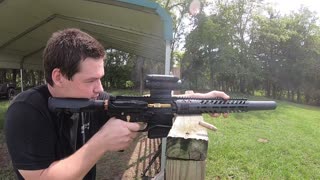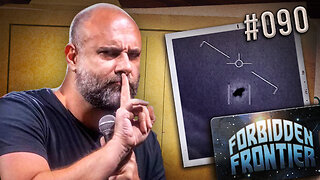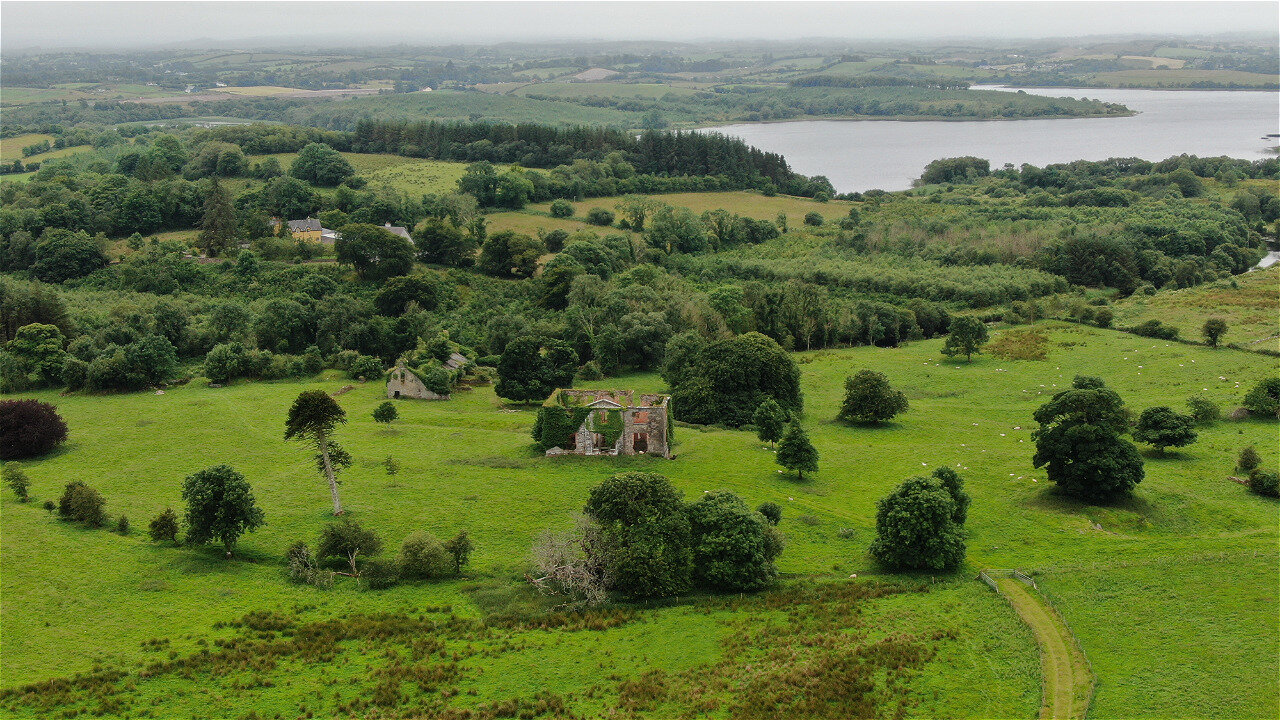Raheens House
Raheen’s House was built in 1847 during the Irish Famine and replaced an earlier house that existed on the site, however the kitchen from the earlier house was incorporated in to the new structure. An older residence on the site was pulled down around the year 1835 by Hugh John Henry Browne who built the present structure. John Wesley described the older structure as a fortified house with two turrets which were still standing in 1835. The Browne’s were said to have been visited by Wesley who founded the Methodist religion and who traveled Ireland on horseback in the 1780's. Wesley laid the foundation stone for the Methodist Church in Castlebar in May 1785. The house is built solidly of chiseled limestone and stands in the centre of what was once a beautifully wooded park. The surrounding landscape was said to be exceptional pleasing when viewed from the Drawing Room window. This estate which surrounded the house extended to 1,000 acres and came into the possession of the Browne family at the time of the Cromwellian Plantations allegedly in exchange for a white horse. In the 1800’s the estate was owned by Dodwell Browne who married Elizabeth Cuffe of Ballinrobe who died in 1777 aged only 44. Dodwell married secondly Maria O’Donel, daughter of Sir Nial O’Donel of Newport. A few years after her marriage, Maria became unwell and had to be transported to Dublin for treatment. As she left her home at Raheens her condition worsened, and she was only a short distance from the house when the horses drawing her carriage came to a halt and would not move. Due to great efforts of the driver the horses eventually relented, and they continued on their journey to Dublin, where Maria died. In 1809, Maria’s husband erected an obelisk on the spot where the horses stopped on the day of her departure. The monument is 25 metres in height and can be viewed from the main reception rooms of the house, as an eye catcher or folly in the landscape.
In September 1910 it became necessary for repairs to be made to this monument which had become unstable. The London steeplejacks of Mr. Will Larkins of 18 Alfred Street, Bow, London were employed to rebuild the apex of the memorial obelisk. It is said at this time that the estate at Raheens was in exceptionally condition as the then owner Dodwell F. Browne had taken up permanent residence in recent years. The monument is built of tapering chiseled limestone that rises to a height of 70 feet that sits upon a plinth of 10 feet. Atop the monument sits a globe of limestone which had been blown off the monument in a storm in the 1890’s which had remained on the ground thereafter. It appeared that an iron dowel had rusted which allowed the apex of the monument to collapse during the gale. The masonry had also suffered over the years when a mountain ash had become embedded high up on the obelisk that had began to dislodge loose stones and it became necessary to have it removed. Mr. Larkin, who was employed to carry out repairs to the structure, supposedly began his career at the age of seven and during his working life he had never suffered any serious injury despite working at extreme heights. He had carried out repairs to the steeple of the Protestant Church in Athenry which was struck by lightning and it was from here that he spied the lady who became his wife. The work to the obelisk at Raheens was carried out by a Mr. Stacey and a number of assistants over three days. The apex was reached by the means of a telescopic ladder which was lashed to the structure. Thereafter a scaffolding was built around the apex which was supported by four small pieces of timber. From this platform, the root of the tree was extracted and the damaged courses rebuilt. A copper dowel was inserted which allowed the fallen globe to be returned to its position on top of the monument. When the monument was built in 1809, a slab was placed on the obelisk inscribed with the words
‘ A Marie
Et A L’Armour
Par son Chere Epouse
Dodwell
1809’
Followed by another slab, which is inscribed
‘ To Gaiety
and
Innocence’
Higher on the monument is a profile of a women said to be that of Maria who in the decade prior to her death wrote to General Humbert who had just taken Castlebar in 1798. She allayed to him her concerns about the safety of herself and other aristocratic ladies in the community. The General replied assuring her of his protection and extended an invitation for Maria and her husband to dine with him. It is said that General Humbert visited the Browne’s at Raheen’s on three separate occasions.
Dodwell Browne died in the 1830’s and the estate was inherited by his son Hugh John Henry Browne who proceeded to plant a number of trees within the demesne including a number of trees along the original avenue. The new house was built at the height of the famine however elements of the original structure that existed on the site were retained such as the kitchen which formed part of the basement of the new house and the out buildings to the rear of the house were also retained. The expense of rebuilding the Browne family home left Hugh John Henry heavily indebted, after his death the encumbered estate passed to Henry’s brother Neil in 1870. Neil O’Donel Browne died on the 15th March 1874 at 8 Upper Mount Street Dublin and left an estate of less than £6,000. With his passing the estate at Raheen’s passed to his son, Dodwell, who spent most of his professional life in the colonial service in Ceylon ( now known as Sri Lanka) from where he returned to Raheens in 1905. Dodwell had three sons, Dodwell, Keppel and O’Donnell and a daughter Norah Lucy. On the 19th February 1895 it was reported that the only daughter of Dodwell Browne, Norah Lucy Frances Dodwell married Thomas Yates Wright the younger son of C. Wright of Lower Oak, Tyldesley, Lancashire.
In October 1908 in Naas, Co. Kildare the death occurred of Dodwell's son, Keppel Glenny Dowell Browne, who was unmarried and aged 35. He was a barrister and had been suffering from Leukaemia. He left £479 13s 4d in his will which was administered by his brother Dodwell F. Browne. His remains were interred in the family vault at Raheens with those of his ancestors. At the time of the census in 1911, Dodwell Francis Browne aged 69 is in living in the house at Raheen's together with his wife Annabelle aged 65, who was born in Co. Down. Their daughter Norah Lucy Dodwell Browne Wright aged 36 who was born in Ceylon and Dodwell’s granddaughter Annabelle Dodwell Browne, aged 6 are also present in the house together with three domestic servants. After the death of Dodwell Senior in 1920, his wife Annabelle continued to live in the house. Her son, Dodwell, became the owner of the estate but he had emigrated to Australia where he remained permanently after 1923 and was joined by his sister after the death of their mother in 1932.
n the 4th December 1932, Annabelle Browne died who in her youth was said to be the envy of many young women when she made her debut on the social scene in London. She was received by royalty and was apparently a frequent visitor to Buckingham Palace. With the death of Annabelle, the Browne connection with Raheens came to an end. The contents of the house were advertised for auction which was carried out over two days in April 1933. The contents of the entrance hall offered for sale included Indian and Chinese ornaments together with mounted birds, exotic animal heads and antlers. What is interesting, is that the animal heads must not have held much appeal for anyone at the auction as it was noted in 1954 when the house was in ruins that these remained on the walls in the house. In the dining room there was a circular mahogany table with twelve chairs, an oak side board and a valuable collection of books contained in a number of bookcases. The drawing room contained a collection of ebony furniture, a grand piano, arm chairs and an Axminister carpet. Also offered for sale were the contents of six bedrooms and the auction was conducted by Robert Caldwell, an auctioneer from Ballinrobe, Co. Mayo. Prior to the sale of the house, the Land Commission had acquired most of the Browne land in 1928 and divided it among the tenants.
In January 1940, the remaining lands of the estate were offered for sale which amounted to 168 acres, which was retained by the family after the bulk of their lands were divided by the Land Commission. In April 1941 it was announced that Reheens Demesne near Castlebar had been sold. It was at that time the property of Dodwell Browne who had been in Australia for some time at the time of the sale. It was said that the demesne had been purchased by a local man and prior to this Raheens had been abandoned with irreparable damage having been done to the woods surrounding the house. The mansion house at the centre of the estate at this time was said to have been in good condition and that the surrounding farm buildings were also in good repair. However, by 1954, the house was in ruins with its large reception room open to the sky and large amounts of rubble having collected in the basement. A curious visitor to the house at this time, recorded what they had seen and mentioned that the roof was stripped from the house in 1947. At this time they noted that there was a strange gate post to be found on the avenue. It was actually the barrel of a seventeenth century cannon, one of four other cannons that once could be found in the grounds of Raheens House. Within walking distance of the obelisk, there is the Browne family vault where several the family members are buried. The last member of the family to buried there occured in 1940 approx. One mystery that is associated with the family vault are two interments whose deaths both occured on the same day. Hugh John Henry Browne and Neal O'Browne both died on the 2nd October 1868, what tragedy befell the family on that day.
Raheens House descended into ruin after 1941 with its roof being removed in 1947
-
 13:21
13:21
khalil597
3 years agobuilding a house
70 -
 0:15
0:15
Jmetcalfbhgre
3 years agoOpen House
57 -
 1:32:36
1:32:36
Game On!
15 hours ago $5.74 earnedPresident Trump TAKES OVER the Daytona 500!
18.7K11 -
 21:35
21:35
DeVory Darkins
3 days ago $22.24 earnedMitch McConnell TORCHED as Secretary of HHS is sworn in
112K187 -
 1:20:04
1:20:04
Tim Pool
4 days agoGame of Money
161K12 -
 4:48
4:48
Cooking with Gruel
16 hours agoThe Perfect Bacon
14.1K3 -
 11:49
11:49
Reforge Gaming
3 hours agoXbox - Next Game on PlayStation?
9.8K3 -
 27:46
27:46
ArturRehi
1 day agoSurprise Counter-Attack in Kursk Advanced 3 Miles | French Jets Arrive | Ukraine Update
9.46K6 -
 11:51
11:51
Alabama Arsenal
15 hours ago $3.32 earnedThe Silent Sledgehammer | GQ Armory 8.6BLK Paladin
52.7K1 -
 2:21:11
2:21:11
Nerdrotic
18 hours ago $38.53 earnedDown the Rabbit Hole with Kurt Metzger | Forbidden Frontier #090
185K37

14 Comments